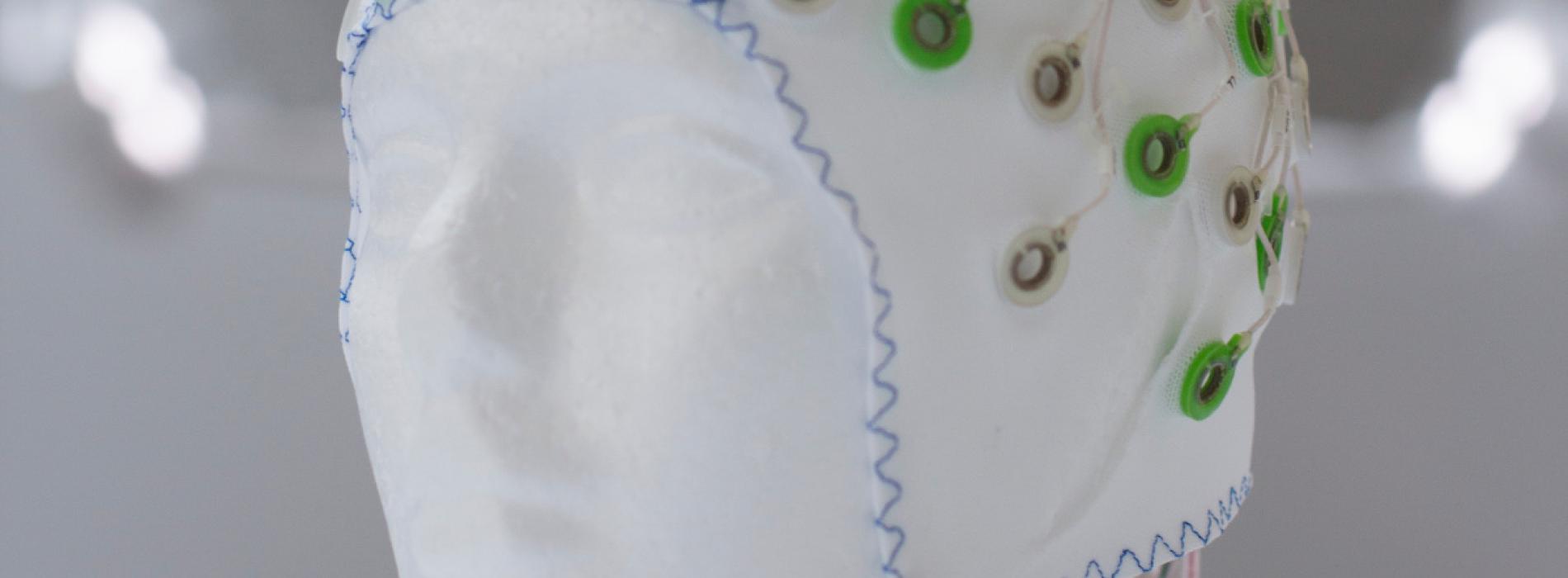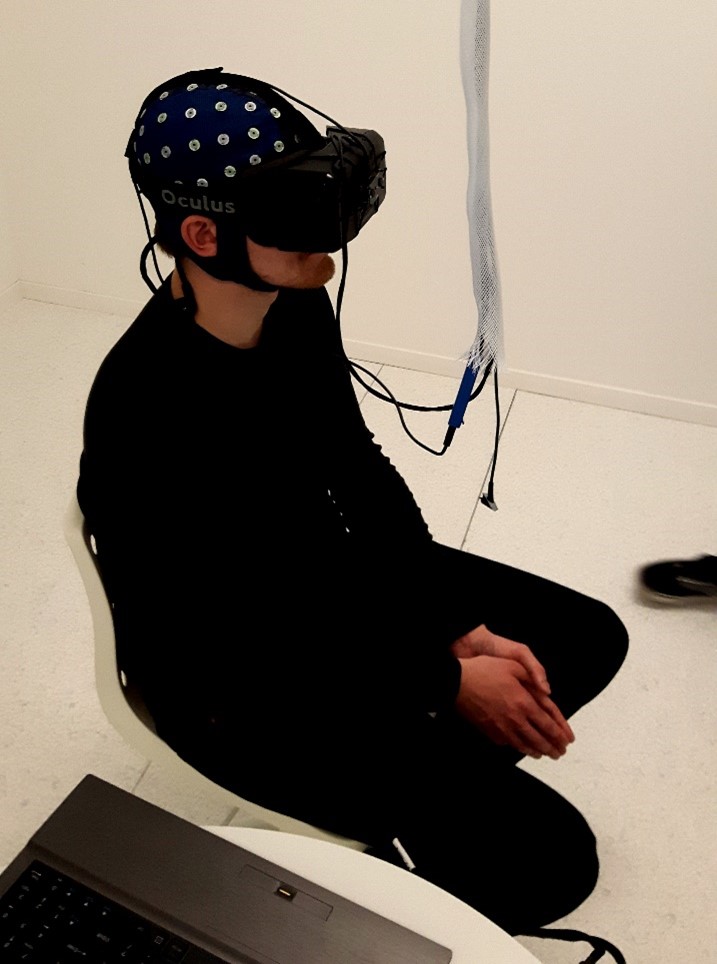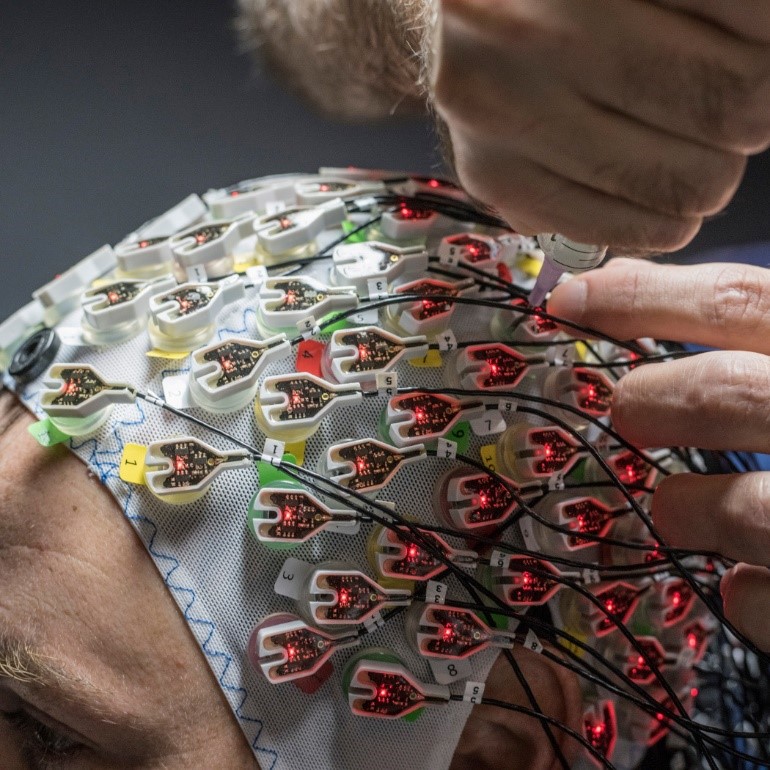
Electroencephalography
The MEEG-BCI platform of Campus Biotech brings together a set of equipment and skills to carry out experiments requiring electroencephalography and magnetoencephalograpy (EEG / MEG).
Visit the HNP website to browse through the available equipment, skills and staff at your disposal; enquire about new projects or learn more about studies and publications that have benefited from the facility.
Invented in 1920 by Dr. Hans Berger, the EEG remains a technique of choice for exploring brain activity. The idea is simple: to record the electrical activity generated by neuronal cells using sensors placed on the scalp, in the same way that a voltage is measured in an electrical circuit.
The applications are numerous and at the cutting edge of research in clinical or cognitive neuroscience. Indeed, the remarkable temporal resolution of the EEG (of the order of a millisecond) makes it possible to analyse extremely rapid cognitive processes, to glimpse very brief pathological transient activities or to measure cerebral microstates evolving at very high speed. Moreover, since the EEG is a direct measure of brain activity, the delay between neuronal activation and its observation is almost instantaneous. This paves the way for the vast field of application of Brain Computer Interfaces (BCI).
Today, EEG recording systems no longer have much to do with Dr. Berger's rudimentary apparatus. The EEG platform at Campus Biotech is equipped with a variety of state-of-the-art systems offering the user the most suitable system for his research:
- High-density 256-electrode EEG system for high-precision mapping of brain activity
- MRI-compatible EEG system for simultaneous MRI/EEG recordings offering both the excellent spatial resolution of MRI and the high temporal resolution of EEG
- Portable EEG system with high autonomy and motion-resistance for mobile recordings (sports activity, virtual reality, etc.)
- Active electrode" EEG systems for recordings outside an environment protected from electromagnetic noise
- Wireless EEG system for BCI or mobile applications
In 2022, a new Magnetoencephalography (MEG) system will be installed in the EEG facility. First of its kind in Switzerland, you can find more information about it HERE.
The platform also offers spaces dedicated to the use of its equipment. This includes recording rooms protected from outside electromagnetic noise (Faraday cage) and equipped with the material required to conduct a neuroscience experiment.
EEG is often combined with other modalities, which is why the platform works closely with the other human neuroscience platforms at Campus Biotech, whether for simultaneous MRI/EEG recordings, for monitoring physiological signals, for the use of neuromodulation systems, for EEG recordings within the clinical and sleep research platform or for EEG recordings in virtual reality.
The platform also offers expertise to its users: EEG training, technical and scientific advice, project-specific development, especially for BCI and neurofeedback.
This platform is placed under the scientific supervision of Professors Christoph Michel (UNIGE) and Dimitri Van De Ville (EPFL).
It is managed by Dr. Gwenael Birot. Mr. Mathieu Scheltienne is the engineer in charge of BCI/neurofeedback and software development, and Dr Vincent Rochas is the EEG scientist. Loan Mattera and Nathalie Philippe act as EEG technologists.

Figure 1 EEG combined with Virtiual Reality

Figure 2 EEG cap with active electrodes